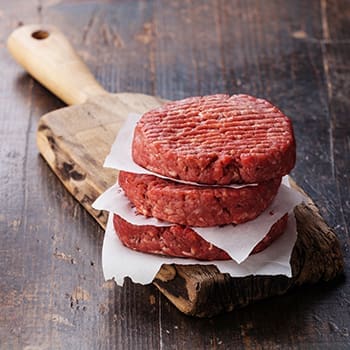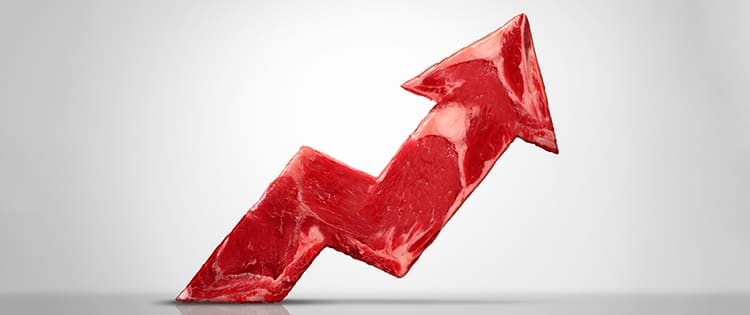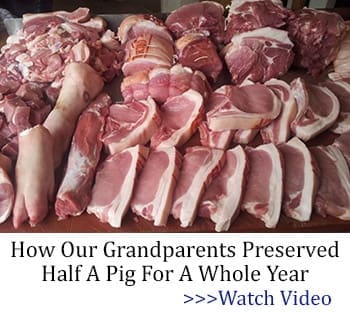I started raising chickens for meat in 2014. I’ve always bought the same feed from the same farmer. Prices have always been about the same. Even when prices on meat were slowly rising in the grocery stores due to Covid issues in the processing plants, my feed supplier’s prices didn’t change much. I process the animals myself so I haven’t had to deal with the labor issues. Chickens from me in 2021 would have cost the same as they had in 2019.
However, yesterday I found out my chicken feed prices will be up almost 20% in 2022. My pig feed will be up 60%. It’s going to be a hell of a jump. The droughts out West have clobbered grain growers. Gas prices are up. Labor costs are up. Some of the minerals have had to be imported and all those prices are up. The gradual increase in prices most of us have been watching are going to take steep upward turn within the next couple months. A lot of people have been saying this is going to happen; you can’t print trillions of dollars, pay people not to work, and expect nothing to happen.
It’s Happening
Grocery stores are coming up with some interesting tricks to hide the inflation. I’m pretty sure we’ve all seen “shrinkflation” at this point.
The grocery store I go to rearranged the display stands in the produce section recently. It’s not the kind of thing you’d notice unless you’d been regularly going to the store for a long time. But they removed a few of the stands and then realigned them so that most customers wouldn’t notice there were a few less, which tells me that not only are they short on produce, but they don’t anticipate restocking fully for the foreseeable future.
I personally haven’t seen the fake cardboard food pictures at any of the stores I shop at yet (just getting used to the sight of empty shelves again), but I’ve heard that that’s what British stores have been doing. I don’t really blame the grocery stores for this. They’ve probably been through just as much as the rest of us as late, and I see enough grumpy people out there that I would be trying to avoid confrontation too.
I Find The Redefinition Of “Meat” More Disturbing
Anyone under the age of 50 is probably somewhat familiar with animal rights activism and the PETA “Meat is Murder” propaganda. I just ignored it. For a long time, I thought everyone had their right to be their own brand of crazy. I didn’t realize this was a movement. I thought it was just passing talk.
Then, I noticed PETA bought stock in Facebook, making it incredibly difficult for farmers to do business on social media. I noticed when a friend of mine had her birds stolen and drugged by animal rights activists, who plastered their theft all over Facebook, and it took her county four weeks to even press charges.
I noticed when the Pause Act (also called Initiative 16) attempted to destroy the livestock industry in Colorado by redefining artificial insemination and pregnancy checks as animal rape.
Initiative 16 was universally struck down by the Colorado Supreme Court, but the habit of “redefining” things has certainly not gone away. It’s no secret that the “Great Reset” crowd wants to curtail meat eating in first-world countries. What may not be as obvious are some of the ways in which they plan to accomplish this.
Fake Meat. Tastes Like Chicken.
Most of us have probably already heard of Beyond Meat and Impossible Burgers. These are highly processed food products made mostly from soy protein concentrates and vegetable oils. They are a vegan attempt to mimic the meat-eating experience without using actual meat. 
I’m not a fan.
These Impossible foods are both expensive and full of things I usually try to avoid consuming (soy and vegetable oils), but you know what you’re getting. They clearly advertise that they contain no actual meat.
Lab grown meat is different.
It actually does contain animal cells, making it non-vegan as a result. A small amount of animal cells are fed various nutrients in a laboratory, and they eventually grow into full-sized pieces of meat. They will probably not be advertised as “lab-grown” meat because that doesn’t sound appealing to most consumers, but instead will more likely be marketed as “clean” meat . Lab grown meat is not on the market yet, though a large facility just opened in California and is slated to start hosting tours to the public in January 2022.
My issues with shaping soy patties into “meat” or growing tissues in a lab and calling it “meat” aren’t really the subject of this article. It should suffice to say that: A) we have a right to know what we’re eating, and B) there are a lot of people with a lot of money (and therefore, power) trying to make it less clear what, exactly, we are consuming.
Any way you look at it, there is a lot of pressure on the average consumer to eat less meat.
Prices are set to skyrocket.
So What Does a Happy, Healthy Omnivore Do To Keep Meat (Real Meat) In Their Diet?
First of all, if you are not in the habit of reading labels, you should probably start. Beyond and Impossible meats are more expensive than real meat right now, but that will probably change soon. Lab-grown meat is also more expensive, but again, with the changes in feed prices as well as labor issues, real meat prices are set to skyrocket. So make sure you’re reading what you’re getting.
If you have freezer space and some money saved, now is the time to buy what you can. Buying a quarter or a half of a cow is probably the most economical choice. I buy a quarter of a grass-finished steer at slightly less than $4/lb. Now, a lot of that is a combination of bone and cuts people don’t necessarily know what to do with. But that’s one of the benefits of the internet. I can type any cut of meat into a search engine and figure out a way to cook it in less than two minutes.
But What If You Don’t Have Freezer Space Or Money To Stockpile?
What are your options to avoid going totally vegan if this is where you find yourself? You don’t want to be forced into any type of lifestyle – you want to choose? How can you retain this freedom with what you eat?
Well, one option would be to see if a few friends or family members would want to split the cost of an animal. When I lived in the suburbs and did not have the freezer space, I would find a friend to split a quarter of a steer with. An eighth of a steer fit nicely into a cleaned-out, regular freezer.
I have heard people recommending switching to “cheaper” pieces of meat, but the reality is that not much is cheap at all any more, and most of us aren’t eating steak every week anyway. Maybe a better way to think about it would be to plan your meat purchases around using every possible piece of whatever meat you do buy.
Related: 10 Foods Not To Store
For example, if I get an arm roast, I can first cook it as an Italian pot roast. I’ll cook it for eight hours or so, so that the minerals from the bone leach into the stock. We’ll get a few meals out of the meat itself. Then, I can save the liquid I cooked the meat in, add a lot of vegetables, and use it as the base for a soup.
I don’t skim the fat off soups. Instead, my kids and I will soak bread in it, making the soup and bread night more filling. In this way, I can use one piece of meat as the base for dinners for the better part of a week.
I do something similar with chickens. If I roast a chicken, we eat the meat itself for one dinner. Then I save the carcass. When I have two carcasses in the freezer, I’ll put them in a pot and cook for four or six hours. I remove the bones, put any meat scraps back into the soup, add vegetables, and there are another couple dinners. I get a lot of mileage out of whatever meat I use.
Even if you only buy ground meat, don’t toss away any fat you drain off. Hang on to it and use it to cook vegetables. Or you can even spread it on bread, if you like the flavor. Meat has a lot of fat-soluble vitamins that you don’t want to dump. Live frugally with your meat. Use as much of the animal as possible, whether it’s storebought or farm-bought.
What Else Are We Likely To See?
Whether you’re on a “freezer full of meat” budget or a “ground meat once a week” budget, it’s worthwhile to see if there are any farmers you can get to know. In fact, if you have any particularly interesting skills or hobbies, you may be able to bump yourself up from the “ground meat once a week” budget. While feed prices are going up, so are labor prices. Don’t sell yourself short.
My gut tells me bartering is going to come back with a vengeance. There are just too many problems with the money supply right now.
People are already talking about it. I was still on social media when the lockdowns started in 2020. Within a few weeks, the rural buy/sell/trade group was full of posts by people looking to swap.
Even if you live in a city, it’s probably worth your while to spend some time getting to know who grows what in your area. Doing some internet research, and then driving out to the country periodically may really pay off. Or you could go to a farmers’ market. I went to farmers’ markets both when I lived in the Chicago and the Houston suburbs, and I met interesting people and made business relationships at both.
Related: Livestock Animals You Should Start Raising For The Upcoming Economic Crisis
Building relationships is more important than ever. Remember that.
An alternative would be to try raising your own meat. Chickens and rabbits will fit onto many suburban lots. You’ll need to research what’s legal in your area. Rabbits are quieter than chickens. People often claim that it’s not “worth it” to raise your own meat.
Think about that for a little bit. Particularly, if you have children, not only are you raising food, you are also providing education and entertainment for your children, which many people budget for already. Raising (and butchering) animals isn’t for everyone, but if you’ve been kicking the idea around anyway, now is the time to go for it. It certainly will not get cheaper anytime soon.
Trying to feed a family real, healthy food was hard enough for a lot of people, even before the government’s COVID response threw a monkey wrench into absolutely everything. Rising prices and fake meat products flooding the market aren’t going to make things any easier.
There Is An Action Plan…
A lot of us have had the rug pulled out from under our feet in the past, but there are coping strategies.
Organizing your thoughts and making a plan that anticipates continually rising prices will help you avoid stress down the road.
Again, inflation is not over. Not even close. Rising prices for me as a producer means rising prices for the consumer 3 to 6 months down the road. This is a friendly warning for anyone who wants a heads up. But we don’t need to panic. All we can do is plan the best we can now, and know that, when the time comes, we have done all we could.
How are you going about dealing with the high prices of meat? Do you have any strategies to share or advice to offer? Has this affected your budget dramatically? Let’s talk about it in the comments.
This article was written by Joanna Miller and first appeared on The Organic Prepper.
You may also like:
How To Prepare For The Rising Energy Prices
6 Small Animals You Can Raise On Your Property
How to Build a Native American Subterranean Roundhouse in Your Backyard (Video)
What We Learned Living on Our Food Storage for a Month










Learn to preserve meat by pressure canning! No need for a freezer, and meat can last for years. I can ground meat, stew meat and chicken every year and our shelves are stocked. Additionally, we hunt and this skill allows us to provide for ourselves year round. I realize hunting is not for everyone, but it can really help during lean times.
I buy my meat at the ‘Reduced prices’ aisle of the grocery store. Meat – and other items – are half priced when their sell by date approaches. It’s all fine to eat and it keeps my freezer full.
I also want to take issue with the “even before the government’s COVID response threw a monkey wrench into absolutely everything” statement. The government is not at fault. It’s the folks who will NOT get their vaccine shots who keep the virus creating new variants and putting us all at risk.
Please stick to the subject and respect other people’s healthcare choices. They are none your yours or my business!
Thank you for pointing out the inappropriate comment.
Yes, thank you for pointing this out… this is not a social forum, please respect this site.
Absolutely. I agree with Anonymous. I homeschool as a supplement to my boys brick & mortar schooling. We just discussed understanding and respecting others “perceptions”. To inform one’s self on the issues is key. Misinformation can pit us against each other. We are not interested in being manipulated by fear. I love this site because it helps me help my family & neighbors. Keep the posts coming. God bless you
Such a great read, and I have been seeing a lot of dominos falling as of late regarding our society becoming cashless and bartering for goods and services in the not so distant future. I have been trying to have an action plan and model for our homesteading to face a lot of trials and struggles. Fortunately we have a decent tribe started for our end goal. Thank you always for great insight!
We bought an extra freezer at the end of 2020 and I started ordering grass fed and organic meat online. Fast forward to Jan 2022, I’m retired and my husband lost his job in December 2021. Not only do we have enough meat to last us a very long time but I paid a lot less than what it is selling at now. Sometimes I get coupons for $1.00 off hamburger and I’ll pick some up. We raise chickens for eggs so we always have plenty of eggs to eat. He laughed at me when I was in the meat buying stage but I told him that you never know what the future holds and how quickly your life can be upended. He’s not laughing now especially when he gets an occasional nice steak for dinner. Thank you for your article. You make excellent sense in these times we live in.
Hogs and goats are easy to raise and feed if you watch what you are doing. Deer and turkey are plentiful in my area and are a great source of meat. You can learn how to do your own processing on You-Tube of all of these animals that I have spoke of. Fish are another good source of food.
We hunt, fish, garden and set up 3 tiers of pantry. Now, Short Term & Long Term. We’ve worked on it over the last 5 years. Sites like this are amazingly helpful. Natural medicines are more important than ever before. Thanks for teaching an old dog new tricks.
when they first started, it was said they Cut the meat off the live cows to get started ,,, the meat has to be alive so it will grow… There is no way I’d even try to eat that,,,, Hope it is wrong,,,,